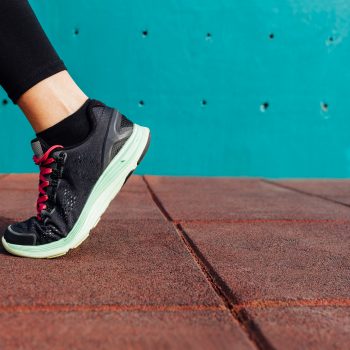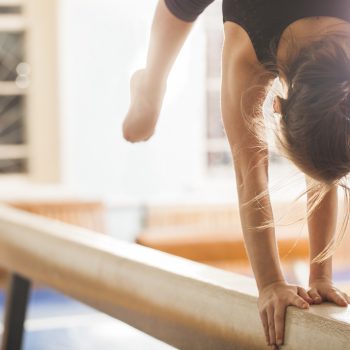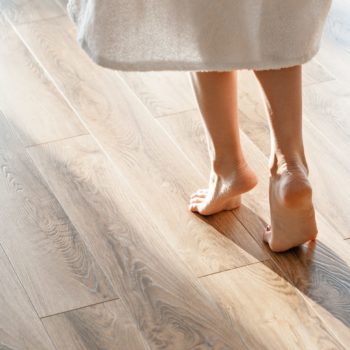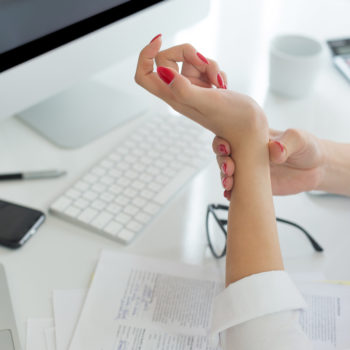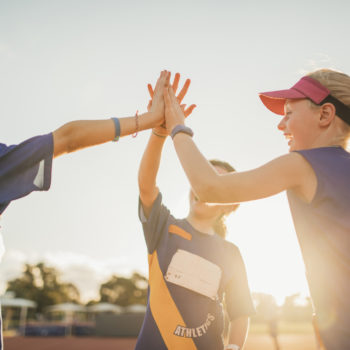The Achilles tendon is the largest tendon in the human body, capable of withstanding a load capacity of up to about 12.5 times body weight. A tendon that is very resistant and with a high capacity for biomechanical “performance”, but which can also “become ill” (until rupture, in some cases), both for mechanical stress and also in relation to diseases of a general nature. What exactly is the “Achilles tendonitis”, how can we recognize it and cure it? Can it be prevented? We discussed the subject in depth with Dr. Maria Cristina d’Agostino, orthopedic specialist and head of the Center for Therapy and Research of Shock Waves at Humanitas, engaged in the study and treatment of tendon diseases for many years.
A pathology that can also be asymptomatic
“In the daily speech we refer to the pathology of the Achilles tendon with the general term of tendonitis – explained the specialist; in reality today we know that, when a tendon becomes “sick”, a real tendinopathy is established (i.e. disease) when the tendon loses its original structure (degenerates) and therefore weakens. On this substrate, but not always, inflammatory processes can be triggered: those for which the patient usually turns to the doctor. And this is particularly true of the Achilles tendon. In fact, a “sick” Achilles tendon does not always manifest pain, in some cases the patient may not notice the tendon pathology and/or underestimate it, and arrive at spontaneous rupture as a sudden and unexpected event, usually during sporting activity or in any case for movements that involve a sudden traction on the tendon itself (for example, sudden changes of direction, running on rough terrain or jumps). Hence the importance of special attention to the state of health of the Achilles tendon, especially when practicing sports or in the presence of risk factors and systemic diseases and concomitant therapies.
There are two typical localizations where Achilles tendonitis may occur: the tendon body (i.e. the central portion), or the insertion site on the bone (the calcaneus) at the back.
Warning signs should not be underestimated
Let’s see what are the warning signs of a tendinopathy of the Achilles tendon in addition to the pain. “Fortunately – continues Augustine – the Achilles tendon is superficial and clearly visible on inspection, so both a structural alteration (typical of the more advanced phases) and an inflammatory process in active phase can be easily suspected with a simple clinical examination. We may notice a “swelling” in the central part of the Achilles tendon (not always associated with pain), or at the level of its insertion on the calcaneus, possibly painful under local pressure, with difficulty in walking or practicing sports. In the more acute phases, in which inflammation in the strict sense prevails, it is also possible to find redness”.
From a diagnostic point of view, in many cases well-executed ultrasound scans can already guide us in the right direction. It will also be useful to complete the examinations with an X-ray (to evaluate the bone and any calcifications); when the ultrasound examination is not able to resolve the doubts, it may also be indicated to investigate with an MRI.
Obviously, it is essential to recognize in the first place any complete spontaneous injury of the Achilles tendon, since in these cases the surgical treatment of tendon repair is indicated. Once the presence of Achilles tendinopathy has been diagnosed, the therapeutic strategy is based on two fundamental concepts: earliness and completeness of treatment. In other words: The sooner we tackle the treatment and with a so-called integrated approach, the more likely it is to heal (or at least improve) with lasting benefit.
Except in cases where urgent surgery is required for complete injury, the treatment of choice is “conservative” (i.e. non-surgical) and the surgical act is considered as a last resort.
The “conservative” treatment includes all those therapies that aim to reduce the inflammatory processes and at the same time reconstitute the original structure and function of the tendon. Fundamental importance is given to physiokinesitherapy (rehabilitative therapeutic exercises specific to the Achilles tendon) and biophysical stimulations, able to act on cells and tendon tissue itself, in some cases infiltrative treatment may also be indicated to improve the trophism of the tendon (not cortisone!).
Among the various biophysical stimulations applicable locally, shock waves, which have now passed the so-called pioneering phase, are currently a very valid therapeutic solution. They are mechanical stimulations (acoustic waves), but do not cause trauma or injury to tendon tissue, but, through the activation of biological reactions, modulate inflammation and remodeling of the tissue, thus facilitating functional recovery.
If well executed and with adequate instrumentation, they are well tolerated and almost free of side effects. It remains important that the conservative treatment is integrated, i.e. the different therapies listed are programmed in combination or sequence (depending on the clinical case), never as the only therapy.
“The patient should be encouraged to devote himself constantly to the “rehabilitation” phase (physiokinesis therapy or therapeutic exercise) in the treatment program of tendinopathy, since it is important to “guide” the recovery of the tendon structure – concluded the specialist. Not to be overlooked is the diagnosis and treatment (where possible) of any concomitant pathologies (generally of a metabolic or immune/rheumatological nature), the presence or non-recognition of which may affect the treatment of Achilles’ tendonitis. It is also important to remember that the intake of quinolonic antibiotics (now commonly used in daily clinical practice), in some subjects, can contribute to the onset of Achilles’ tendinopathies, sometimes very resistant to treatment. Finally, we must not forget that treating a tendon disease, especially Achilles tendinitis, can take several months, because the healing (or improvement) is not related only to the reduction of pain and inflammation, but to the improvement of the structure of the tendon itself that is altered.
What is the prevention?
“Surely – Augustine illustrates – prevention is the key to everything, and it is also fundamental to reduce the risk of recidivism. Prevention is based on knowledge and early recognition of possible risk factors, as well as their elimination or control.
Here are some short points, some practical tips:
Follow proper nutrition, as well as weight control and proper hydration, all factors that also determine the health of our tendons
Do not underestimate concomitant general pathologies (e.g. gout, diabetes, hypercholesterolemia, rheumatic or autoimmune diseases) or drug therapies in progress or in the past as possible contributory causes of tendinopathy.
Always deal with sporting activity with caution and gradualness, which must match our physical conformation and capabilities, with constant and gradual increase in training, avoiding excesses and “off schedule” exercise.
Choose sports equipment carefully, first of all shoes; the same can be said for shoes of daily life (useful for example a minimum rise or a few cm. of heel, especially if there are already first signs of an Achilles pathology).
If possible, supervision of the athletic gesture with the collaboration of the instructor/coach, as well as for the drafting of the training plan.
Possible correction with insoles of possible “deformities” of the foot (e.g. flat foot);
Reduction/absence from sport activity during tendon disease treatment.
Generally speaking, without wishing to create “alarmism” towards the pathologies of the Achilles tendon, it is advisable not to overlook the first signs and clinical symptoms of a “tendonitis” of the Achilles, as well as always remembering the principle “healthy tendon in a healthy body”.


